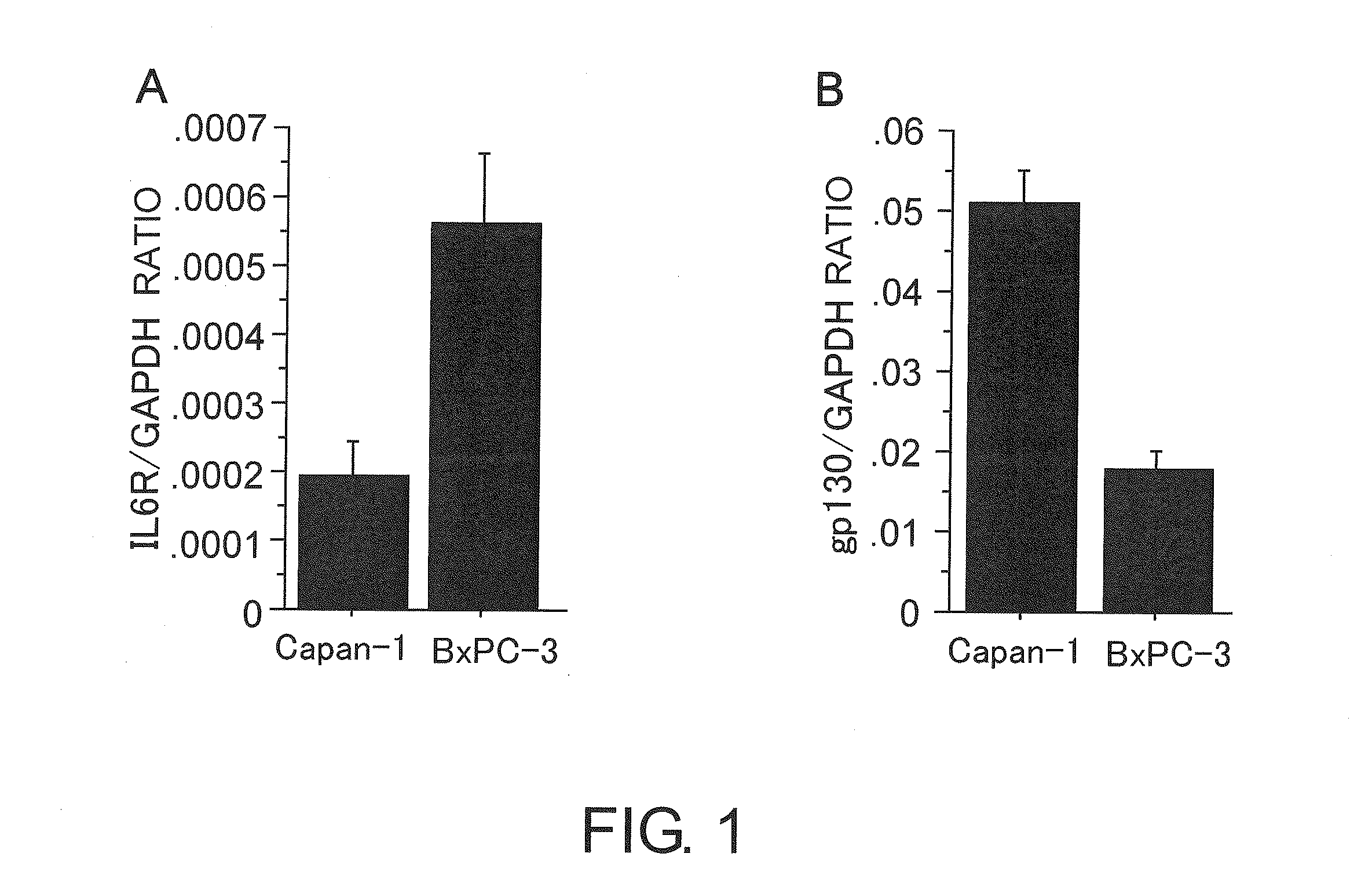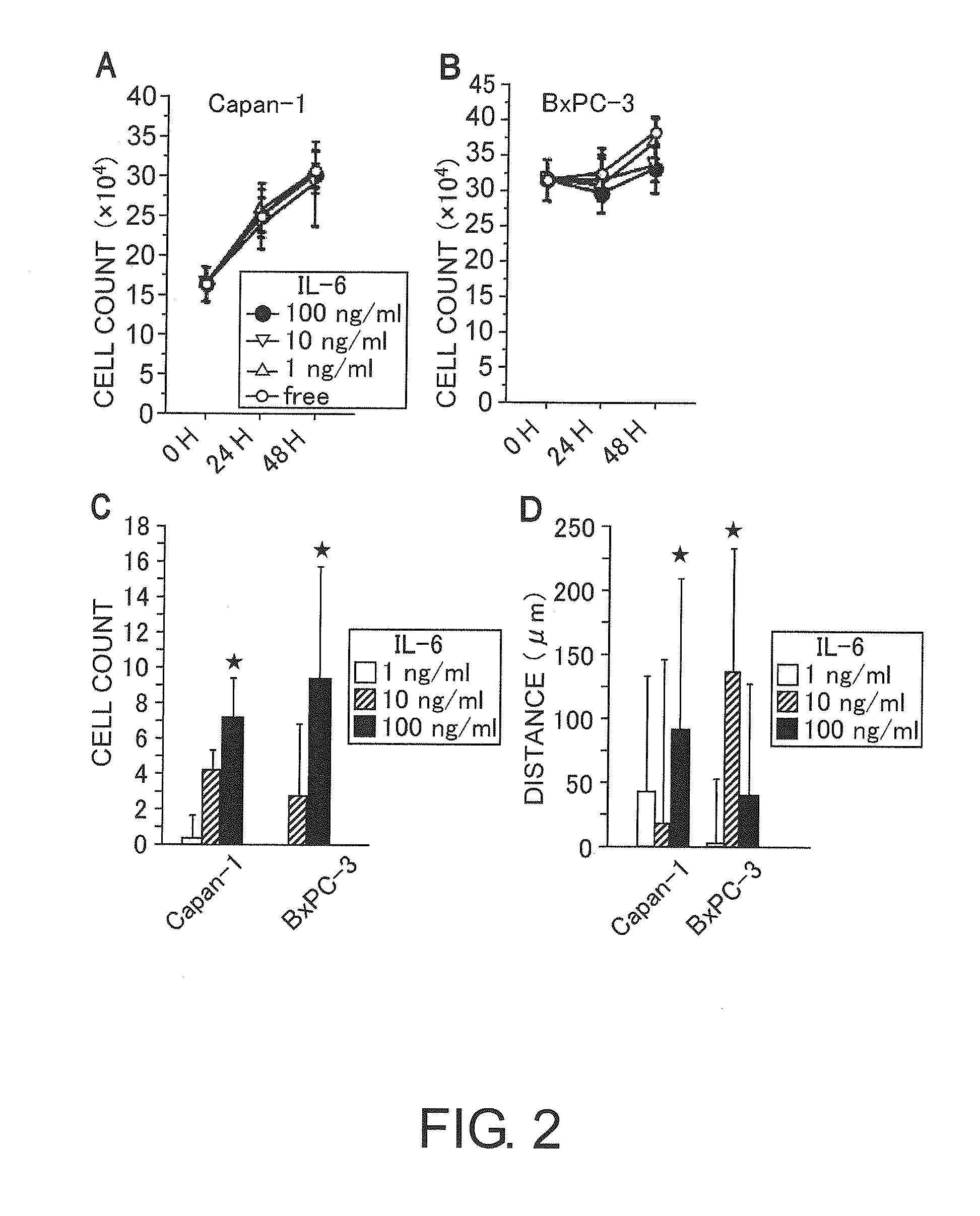Neuroinvasion Inhibitor
a neuroinvasion inhibitor and neuroinvasion technology, applied in the field of neuroinvasion suppressors, can solve the problems of neural invasion symptoms, little information on neural invasion control, and often recurrence of pancreatic cancer early after, so as to suppress neural invasion, enhance chemotactic and migratory activities and intracellular signaling, and suppress neural invasion.
- Summary
- Abstract
- Description
- Claims
- Application Information
AI Technical Summary
Benefits of technology
Problems solved by technology
Method used
Image
Examples
example 1
[0181]The mRNA expression of IL-6α receptor (IL6R) and IL-6β receptor (gp130) in cells of the human pancreatic cancer lines was assessed by real-time RT-PCR. It is clearly demonstrated that the human pancreatic cancer lines express IL6R mRNA (FIG. 1A) and gp130 mRNA (FIG. 1B).
example 2
[0182]Using human recombinant IL-6, the effects of IL-6 on growth activity, chemotactic activity, and migratory activity of the human pancreatic cancer cell lines were assessed by monitoring the cell count over time (FIGS. 2A and 2B), by chemotaxis assay (FIG. 2C), and by wound healing assay (FIG. 2D). It was demonstrated that IL-6 enhances the chemotactic and migratory activities of the pancreatic cancer cell lines, while IL-6 has no effect on the cell growth.
example 3
[0183]Using human recombinant IL-6 (rhIL6), the effect of IL-6 on intracellular signaling of the human pancreatic cancer Capan-1 cell line was assessed by Western blotting for phosphorylated STAT3 (pSTAT3) (FIG. 3A), phosphorylated Erk1 / 2 (pErk1 / 2) (FIG. 3B), and phosphorylated Akt (pAkt) (FIG. 3C). The intracellular expression levels of phosphorylated STAT3 protein and phosphorylated Erk1 / 2 proteins were clearly elevated 15 minutes and one hour after addition of rhIL6, respectively. In contrast, IL-6 had no effect on the expression of phosphorylated Akt.
PUM
 Login to View More
Login to View More Abstract
Description
Claims
Application Information
 Login to View More
Login to View More - R&D
- Intellectual Property
- Life Sciences
- Materials
- Tech Scout
- Unparalleled Data Quality
- Higher Quality Content
- 60% Fewer Hallucinations
Browse by: Latest US Patents, China's latest patents, Technical Efficacy Thesaurus, Application Domain, Technology Topic, Popular Technical Reports.
© 2025 PatSnap. All rights reserved.Legal|Privacy policy|Modern Slavery Act Transparency Statement|Sitemap|About US| Contact US: help@patsnap.com



